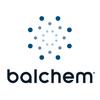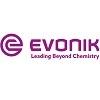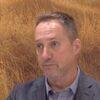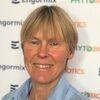Explore all the information on
Dairy cattle nutrition
Welcome to the page about Dairy cattle nutrition of Engormix; a source of knowledge on Dairy cattle nutrition.
In-Person Seminar with Dr. Mike Van Amburgh.
Join Balchem and featured guests in the UK and Italy for a full day of learning, research and conversation around amino acid nutrition and how you can help reach cows’ full genetic potential.
Speakers
Dr. Mike Van Amburgh, Cornell University
Dr. Usman Arshad, ETH Zurich
...
Comments : 0
Recommendations: 0
Dairy cows are often thought of as metabolic super athletes, requiring hard work and a herculean effort to achieve high milk production. In reality, it’s just the opposite. Productivity is an expression of health and vitality, not a result of the cow working under stress. Put a cow in a healthy environment, provide adequate nutrition and they’ll fully express their genetic potential in the form of exceptional milk production. Instead of involving hard...
Comments : 2
Recommendations: 0
Choline is essentially a required nutrient for all dairy cows, with proven benefits on metabolic health, milk production, colostrum yield, and calf vitality. It offers a proven solution to help cows transition smoothly and boost productivity. Discover how this innovation benefits both herds and profitability. Choline has...
Comments : 1
Recommendations: 0
Introduction In March 2024, the CDC and USDA reported the first-ever cases of HPAI A(H5N1) in dairy cattle in the United States. As of May 2025, over 1,000 herds across 17 states have been affected, with California among the hardest hit. This unprecedented outbreak has had a significant impact on milk production, animal health, and public confidence. The emergence of Highly Pathogenic Avian Influenza (H5N1) in California's dairy cattle since August 2024 has...
Comments : 0
Recommendations: 2
A cow’s biology and genetics set the stage for her milk production potential. Thanks to genomics, the pace of genetic progress has accelerated in recent years, pushing that potential ever higher. But are we feeding cows to match it? Today’s dairy cows can achieve more with better nutrition, yet their ability to physically consume enough nutrients lags behind their rising requirements. ...
Comments : 0
Recommendations: 1
Introduction The dairy industry continues to provide a nutritious food source to our growing global population. Throughout history this industry has undergone significant evolutions contributing to a “more sustainable” product. But what does sustainability really mean, and in animal agriculture, why do we care? According to the U.S. National Environmental Policy Act (NEPA) of 1969 sustainability is to “create and maintain conditions, under which humans and nature...
Comments : 0
Recommendations: 0


Bioavailability of multiple rumen-protected amino acids by a stable-isotope technique in dairy cattle
Suggested link
Introduction Trace minerals exist in cells and tissues of the body in a variety of chemical combinations and characteristic concentrations, depending on the trace mineral consumed and the tissue in which the trace mineral is metabolized (McDowell, 1992; Underwood and Suttle, 1999). Concentrations of trace minerals must be maintained within narrow limits in a cell (McDowell, 1989, 1992; Underwood and Suttle, 1999). Trace mineral deficiencies, toxicities, and imbalances require the...
Comments : 0
Recommendations: 0
Introduction The global agricultural sector, including associated land-use changes, was responsible for emitting 10.6 gigatons (Gt) of carbon dioxide equivalent (CO 2 e), contributing considerably to the overall 53 Gt CO 2 e of global greenhouse gas (GHG) emissions (FAO, 2023). In the United States, the agriculture sector contributed 0.59 Gt CO 2 e in 2022, representing 9.36% of the nation's GHG emissions. This marked a 7.7% increase from 1990 levels...
Comments : 3
Recommendations: 0
In this conversation with Dr. Ryan Ordway from Balchem, we dive into how dairy farmers can manage the transition period without relying on Kextone. The key? Preventing ketosis through proper nutrition and management. ...
Comments : 0
Recommendations: 0
Dr. Ryan Ordway from Balchem talks about the benefits of ReaShure-XC, a powerful nutritional solution that ensures adequate choline intake for animals. By providing sufficient choline, this product promotes a healthy liver, supports mammary gland energy for milk production, and boosts colostrum quality....
Comments : 0
Recommendations: 0
1. Introduction Lactoperoxidase is one of the main protein enzymes in milk, and is found in average concentrations of 30 mg/L, much higher than the biological requirements for an optimal enzymatic reaction [1]. This enzyme belongs to the group of oxidoreductases, and is responsible for the bactericidal and bacteriostatic phase during the first hours after milking [2-4]. Lactoperoxidase enzyme is a milk protein with special biological activities, and particularly those that are...
Comments : 0
Recommendations: 0
Fatty acids (FA) are organic molecules classified by their number of carbon atoms and number and position of double bonds between these carbon atoms (Maulucci et al., 2016). Fatty acids fulfill various functions, and they are important sources of energy. Also, FA are precursors for the biosynthesis of phospholipids, for the generation of numerous ligands for different types of receptors (Buczynski et al., 2009), and are the source of lipid mediators, particularly of molecules associated with...
Comments : 0
Recommendations: 0


Bioavailability of multiple rumen-protected amino acids by a stable-isotope technique in dairy cattle
Suggested link
Vinod Katiyar, Vice President at Himalayan Creamery, shares insights on managing a large-scale dairy farm in Punjab, producing 9,000 liters of milk daily. He highlights the challenges small-scale farmers face, the need for better silage quality, and emphasizes improving milk standards through education, protocols, and infrastructure....
Comments : 0
Recommendations: 0
Prof. Anna Catharina Berge from Ghent University delves into the intricate challenges faced during the critical first six months of a calf's life....
Comments : 2
Recommendations: 6
Global food demand is set to double by 2050 in line with UN estimates that the world population will increase from today’s 7.6 billion to reach 9.8 billion over the next 26 years. To keep pace with such growth, agricultural systems throughout the world will need to provide extra food to feed the rising number of people. While this is a daunting prospect, such enormous growth will also provide opportunities and challenge for the dairy sector as we seek to keep providing the global...
Comments : 3
Recommendations: 1
The role of Actisaf® Sc 47 in modern dairy nutrition Improving feed efficiency is one of the most effective strategies to reduce GHG emissions, whilst still increasing milk production. As global demands shift from pursuing maximum output, irrespective of the resources used, to the pursuit of balanced sustainability in which efficient production is measured against environmental concerns and the use of finite resources, so similar changes in approach are...
Comments : 0
Recommendations: 0
Overview The transition period is defined as approximately 21 days before and after calving, during which dry matter intake is restricted while the demand for nutrients increases rapidly and there are intense metabolic and hormonal changes which impact the whole lactation. These changes result in negative nutrient balance with attendant metabolic disorders and greater risk of disease incidences which affect foetal growth together with cow health, fertility, and milk production...
Comments : 0
Recommendations: 0
1. Introduction Both L-glutamate (Glu) and L-glutamine (Gln) are abundant amino acids (AAs) in plant, microbial, and animal proteins [1]. In the whole bodies of sheep and cattle, Glu and Gln are the third and eighth most abundant AAs, respectively. For comparison, the total content of these two AAs, along with other AAs, in feeds [e.g., Bermuda grass, distillers dried grains, and solubles (DDGS)], ruminal microbes, and skeletal muscle proteins is also relatively high, as summarized...
Comments : 1
Recommendations: 0


Bioavailability of multiple rumen-protected amino acids by a stable-isotope technique in dairy cattle
Suggested link
Dr. José Santos from the University of Florida discusses the essential role of choline in dairy nutrition during the conference titled "Choline: A Required Nutrient (Part II)." This content is brought to you by Balchem...
Comments : 1
Recommendations: 3
Introduction Supplemental lipids are commonly included in diets for ruminants (Doreau and Ferlay 1994). These lipids are components of feedstuffs or through the addition of specific lipid additives (Loften et al. 2014). Most commonly, these lipid additives are used to increase the energy density of the diet (Hess et al. 2008), but can also be used to modulate the fatty acid (FA) composition of body tissues or induce metabolic changes. Verdugo (2016)...
Comments : 3
Recommendations: 2


























